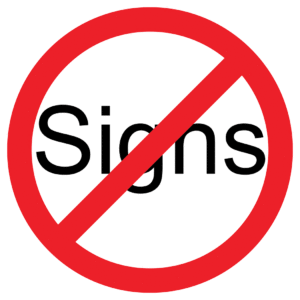By Nelson Cary and Lauren Sanders
The Seventh Circuit recently ruled that a municipality’s nondiscriminatory ban of all private signs from the public roads and right-a-ways could be used to take down Scabby the Rat. Scabby is a giant, inflatable balloon that is available in sizes 6 to 25 feet tall. (The website the court cited in its opinion is here, for the curious!) Unions have historically used Scabby (or other inflatables) to draw attention to labor disputes by posting him outside the workplace.
In 2014, in Grand Chute, Wisconsin, Local 330 of the Construction and General Laborers’ Union learned of a masonry company it said was not paying area standard wages and benefits. To protest these practices, the Union installed a 12-foot version of Scabby. The Union’s protest went smoothly the first day. On the second day, however, Grand Chute’s code enforcement officer (yes, there was only one) went to the Local’s president and told him that the Union would need to deflate Scabby because the rat violated the town’s sign ordinance.
Upon removing the rat, the Union sued the town in federal court. The Union argued that the ordinance violated its First Amendment rights because the town was selectively enforcing the ban to silence Scabby. After the town won at the trial court level, the Union appealed.
On appeal, the court explained “there is no doubt that a union’s use of Scabby to protest employer practices is a form of expression protected by the First Amendment.” But a municipality can implement a ban on all private signs from the public roads and right-of-ways (including Scabby), so long as (1) the ordinance is content-neutral and nondiscriminatory, and (2) the town does not selectively enforce the ban to permit messages that the town approves while prohibiting messages by unpopular speakers. Because Grand Chute’s sign ordinance was content-neutral and the evidence showed that the town had consistently enforced the ban, the court of appeals upheld the district court’s ruling in favor of the town.
For the labor professional caught up in a union dispute, the decision is a helpful reminder to check the zoning and signage ordinances of the localities where the labor dispute has arisen. There may be limitations on the tactics the union employs to confront the employer or advise the public of the dispute.

